TOWN SQUARE
BACK TO ALL POSTS Project Tarsus: A Model for Co-creation in Digital Art
Project Tarsus: A Model for Co-creation in Digital ArtI entered 2023 with a personal goal to put into practice the concept I describe in my pinned tweet of “co-creation” - recognizing that artist and collector play different roles in this Digital Art marketplace and together they give meaning and purpose to a piece of work.
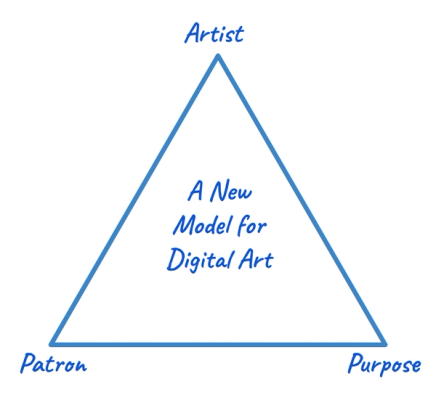
This concept forms the basis of a new model for the creation of Digital Art where Patrons and Artists collaborate to launch projects that result in amazing Art that will be immutably memorialized on chain in the service of a higher purpose.
The first Project is called Project Tarsus and involves a commission I’ve made with the exceptional aerial photographer @Beh0ldingEye Paul Seibert whose work I’ve collected and who I consider a friend.
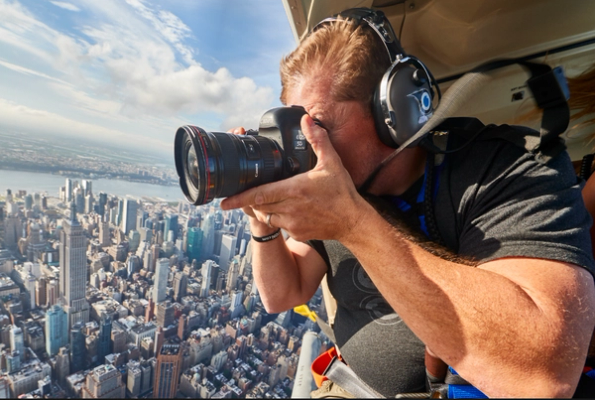


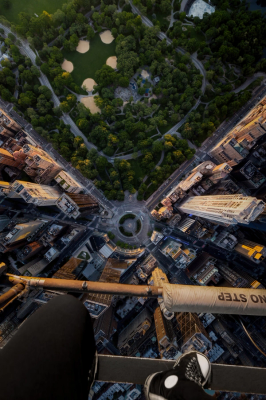
This project involves Paul photographing the area where I grew up in New Jersey from the sky with a specific focus on my local Church, St. Paul’s, which has been my family's place of Baptisms, Communions, Weddings and Funerals since the late 1800s.
It was by chance that when I told Paul that I was thinking about this project, he went into his archives and found an older shot from his past trips that is almost a perfect match for what we hope to do!

The steeple is that of St. Paul’s in the shadow of the NYC skyline. We’re producing prints of this image, and several others that include the steeple in the frame, to sell at the event with the proceeds going to the Church.


On the weekend of June 23, 2023, Paul will get up in a helicopter and capture some new images specifically for Project Tarsus. During this weekend the Church is also hosting a Festival so we hope to capture colors and lights from the Festival as part of the aerial shot.
I’ve committed to paying Paul a fee for a 1:1 of the project, and have agreed to cover the costs of his trip to the NYC area. I’ve also paid him a one-time fee for the images above for the right to sell them as prints.
In return, Paul generously offered the prints at a reduced price to his typical fee and has agreed to donate a number of the images that are not ultimately minted as the 1:1 to be available for sale as part of a small collection with proceeds going to the Church. Royalties will be set to benefit the Artist for any secondary market activity.
This is an example of co-creation that is a win for me, for Paul and hopefully for the Church.
Funny thing is I don’t consider myself a devout and practicing Catholic. I tell people I’m a “recovering Catholic” and have grown away from the teachings of the Church. But, I have strong interest in the convergence of Art + Symbolism + the Human Experience. Making Project Tarsus’ focus on a 160 yr old church a compelling project.
The convergence of Art + Symbolism + the Human Experience is especially relevant today given the dramatic shifts toward a more digital age. One path this shift takes us is a more isolated future. Another is a more connected community.
I’m in favor of the more connected community. So a good jumping off point for me at least in the Projects I choose to pursue will be those that take the lessons of the past and build on them for the future.
And over the course of human history the best example of the convergence between Art + Symbolism + the Human Experience has centered around World Religions, the historic source of our common stories, myths, beliefs and memes.
This is not unique to Western civilization.
Ancient Egyptian civilization: Art was heavily influenced by their religious beliefs. Their understanding of the afterlife, for example, is depicted in the elaborate wall paintings found in tombs. The well-known Book of the Dead is a collection of spells and images that guided the dead through the afterlife.
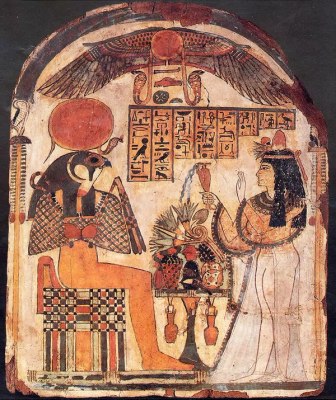
Ancient Egyptian wooden stela depicting Lady Djedkhonsuiwesankh giving offerings of food, drink, and flowers to Re-Horakhty (c. 950–700 BC); Photograph by Oriental Institute, the University of Chicago; painter unknown, Public domain, via Wikimedia Commons
Mesopotamian civilization: Like ancient Egypt, religion played a significant role in their art customs. Many of their works were devoted to their gods, with intricate reliefs and statues found in temples and ziggurats. The Epic of Gilgamesh, one of the oldest known pieces of literature, includes many spiritual and religious themes.

MESOPOTAMIAN TEMPLES OR ZIGGURATS
Chinese civilization: Art in ancient China was deeply tied to Confucianism, Taoism, and Buddhism. Scroll paintings, pottery, jade carvings, and architecture often reflect these spiritual beliefs. The Forbidden City in Beijing, for example, is filled with symbolism derived from Chinese cosmology and numerology.
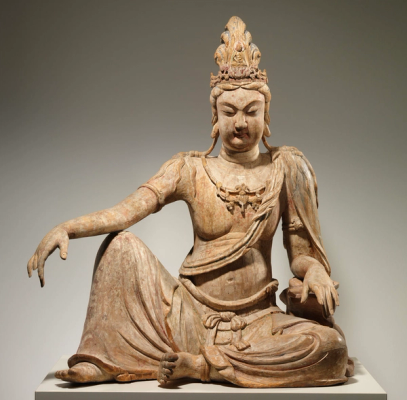
Bodhisattva Avalokiteshvara in "Water Moon" Form (Shuiyue Guanyin) 11th century. China. Liao dynasty (907–1125). Wood (willow) with traces of pigment; multiple-woodblock construction. H. 46 1/2 in. (118.1 cm); W. 37 1/2 in. (95.3 cm); D. 28 in. (71.1 cm). The Metropolitan Museum of Art, New York, Fletcher Fund, 1928 (28.56)
Indian civilization: Hinduism, Buddhism, and Jainism have greatly influenced the art of the Indian subcontinent. Temples and sculptures representing deities and religious narratives are common. The intricate carvings in the Ajanta and Ellora Caves or the massive temple complexes of Khajuraho and Hampi provide great examples.

Painting of Padmapani. Cave 1, Ajanta Caves, Maharashtra, India
Mesoamerican civilizations: The Mayans, Aztecs, and Incas incorporated their religious beliefs into their art extensively. From the monumental pyramids dedicated to their gods to the detailed ceramics and textiles depicting their cosmology and rituals, their spiritual beliefs were central.

Head of the Aztec Moon goddess Coyolxauhqui. From Tenochtitlan, carved during the reign of Ahuitzotl, 1486-1502 CE. Green diorite. (Museum of Anthropology, Mexico City)
African civilizations: Many African cultures have a long history of integrating their religious beliefs into their artwork. Masks, sculptures, and textiles often represented deities, ancestors, or spiritual concepts.
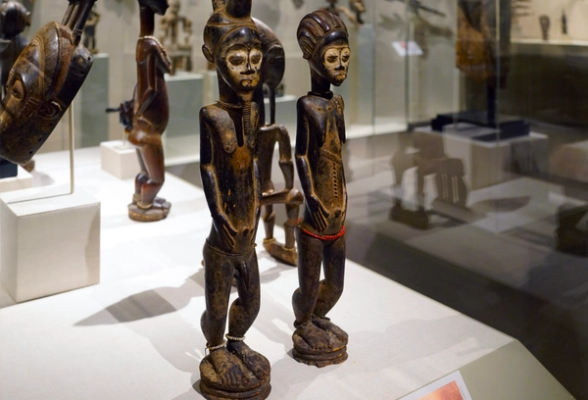
Pair of Diviner’s Figures, 19th–mid-20th century (Baule peoples, Côte d’Ivoire), wood, pigment, beads and iron, 55.4 x 10.2 x 10.5 cm (The Metropolitan Museum of Art; photo: Steven Zucker, CC BY-NC-SA 2.0)
Western civilization: While I’m most familiar with Western traditions, it's clear to anyone who has toured Europe the role that Art has played in the cultural development of Europe over millennia across all art forms.
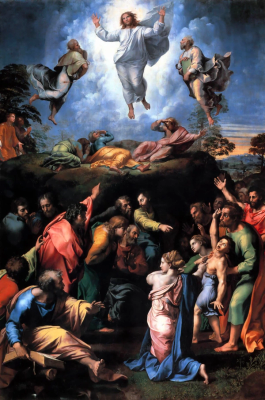
The Transfiguration, Raphael, 1516-20, Oil tempura on wood, Piancoteca Vaticana, Vatican City
In 1999, Pope John Paul II wrote a letter to Artists that reads in part: “Obedient to their [Artists] inspiration in creating works both worthwhile and beautiful, they not only enrich the cultural heritage of each nation and of all humanity, but they also render an exceptional social service in favor of the common good.”
The letter in its entirety is worth a read that describes the role of Art in advancement of human’s desire to get closer to the divine.
Hopefully, Project Tarsus is the first of several co-creation efforts where I join with an Artist in the service of some higher purpose to bend the arc of this digital shift to one that brings us closer together.
https://twitter.com/FrankieDTankie/status/1595136107762839552?s=20
